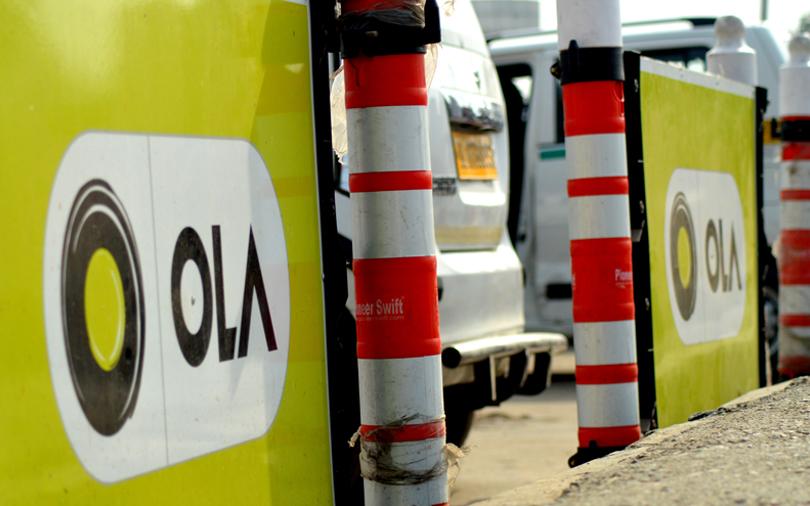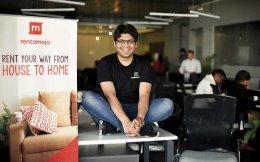Ride-hailing firm Ola’s second shot at the food business after acquiring the Indian business of Foodpanda is undoubtedly the most significant development in the Indian online food delivery industry this year, but it's not quite enough to upset the market dynamics.
Ola, operated by ANI Technologies Pvt. Ltd, will have to offer heavy discounts and ensure continuous cash infusion to create a winnable position for Foodpanda, a distant third player in the food-delivery space, after market leaders Zomato and Swiggy, industry observers say.
Last week, the homegrown cab aggregator said it was acquiring Foodpanda India from its German parent Delivery Hero in an all-stock deal. Ola also committed to inject $200 million into Foodpanda India to expand its business.
“This is a classic case where the market hasn't expanded and there are more players than the market can take. There is definitely going to be a price war and that is where Ola’s investments are likely to go into,†said Anup Jain, managing partner at consumer and retail consultancy Redback Advisory Services.
Jain also said that Delivery Hero investor Rocket Internet is making a desperate exit from India, and so Foodpanda’s brand value is at a low. “If Ola wants to be a top player, it will have to continuously invest in discounting, consumer acquisition, marketing and technology,†he said.
The Foodpanda acquisition comes after Ola’s main rival, US-based ride-hailing firm Uber Technologies Inc, jumped into the food delivery business with the launch of UberEats in May. It also comes more than a year after Ola, in March 2016, pulled the plug on its food initiatives Ola Cafe and Ola Store, after launching them in 2015, to focus on its core operations.
To be sure, Ola has been relatively conservative when it comes to acquisitions. Foodpanda is only its fourth purchase, and other well-funded consumer Internet companies in India such as Flipkart and Paytm have struck many more acquisitions. However, Ola's previous three deals were in similar segments; its first acquisition was of cab aggregator TaxiForSure and the other two were of digital payments startups that now form the backbone of its Ola Money business.
So, what explains Ola's decision to make an acquisition in an unrelated area?
“When you get steep valuations and raise too much money, you are forced to justify it with high growth,†said a partner at a venture capital firm, who did not want to identified.
The founder of a transport consultancy, who also did not wish to be identified, said that this is a “gamble†as it is not Ola's core area of business. “As growth slows, expansion has to come from a new product. And food is the fastest-growing business,†he said. However, he said that as Ola might achieve operational synergy as it expands its autorickshaw, bikes and bicycle businesses.
Other industry executives are not as harsh. Rohan Agarwal, engagement manager at RedSeer Consulting, said there is a deep-rooted investor interest in online food delivery globally. “The customer segment is similar and Ola will be able to cross-sell, apart from boosting the overall customer base. Ola has a deep understanding of the tier 1 cities and its micro markets as well as the business volume to be expected from these metro micro markets,†he said.
While Ola, no doubt, now has the requisite capabilities in terms of logistics, network and on-ground infrastructure, it remains to be seen how far the company can leverage these to turn food delivery into a profitable business.
“I believe Ola went for Foodpanda because it was available at a very reasonable price and it helps Ola increase its addressable market on paper,†said Satish Meena, senior forecast analyst at Forrester Research. “However, how much of it Ola can tap into is another question.â€
Meena also said that the food-delivery business is much more complicated than the cab business and that Ola will find it difficult to compete with Swiggy and Zomato, which together control nearly 80% of the market.
According to research and advisory firm RedSeer Consulting, gross merchandise value in India's online food-delivery sector grew to $300 million in 2016 from $120 million the year before despite several startups shutting down and investors tightening their purse strings. The report projects the sector could touch $1.5 billion by the end of 2018 and $2.5-3.5 billion by 2021.
Data from VCCEdge, the research arm of VCCircle, show the food delivery segment recorded 63 deals worth $274 million in 2015.
The number of deals fell to 43 in 2016, amounting to a mere $78 million. In 2017, the number of deals fell again, to 20, but total deal value jumped to $124 million, signalling improved investor sentiment.
Market dynamics
After the bloodbath and the market correction in 2015 and 2016, two predominant models—restaurant marketplaces and cloud kitchens—have emerged in the food-tech segment.
A marketplace aggregates and advertises restaurants, besides deploying a tech-driven logistics infrastructure to deliver food. A cloud kitchen is a rather complex mechanism where the operators attempt to build three components of the food business—brand, tech infrastructure, and an entire logistics engine—to control the whole process in order to achieve profitability.
Zomato, Swiggy and Foodpanda are dominant marketplaces in India while FreshMenu, Box8, Faasos and HolaChef are pure-play cloud kitchens.
In recent years, the industry has learnt key lessons, leading to improved focus on consumer satisfaction and key geographic areas. Companies operating on these models have improved their unit economics, reducing delivery costs and increasing penetration in existing markets.
Still, Foodpanda, Zomato and Swiggy as well as other food-delivery and food-tech companies in India are making losses as they typically operate on razor-thin margins.
Foodpanda, however, has lost less on every rupee earned as revenue than Zomato and Swiggy for the financial year through March 2017. Foodpanda’s revenue for 2016-17 climbed to Rs 62.16 crore from Rs 37.81 crore the previous year, thanks to strong order growth in key markets. Losses narrowed to Rs 44.81 crore from Rs 142.64 crore.
Bundl Technologies Pvt. Ltd, which runs Swiggy, clocked revenue of Rs 133 crore in 2016-17, a six-fold increase from Rs 20 crore the previous year. Its loss widened to Rs 205 crore from Rs 137 crore as costs more than doubled.
Zomato posted revenue of Rs 332.3 crore for 2016-17, up 81% from 2015-16. It narrowed its loss to Rs 389 crore from Rs 590.1 crore. Zomato, however, is not just a food delivery company but also offers a restaurant listings platform, table reservation and other services.
Clearly, Foodpanda is far behind Zomato and Swiggy in terms of revenue.
Moreover, Zomato and Swiggy have been successfully testing and operating an integrated model of a marketplace and a cloud kitchen but Foodpanda has stayed away from experiments to stick to its core marketplace model.
Both Swiggy and Zomato have been looking for multiple monetisation channels as low ticket size of transactions and high delivery, customer acquisition and operational costs make it very expensive to run a pure-play food-tech business where they focus on just one vertical.
For example, Swiggy has launched a new supply business and three cloud kitchens. It also started Swiggy Access to address the supply gaps related to the availability of food options or restaurant choices based on consumer demand. Meanwhile, Zomato has acquired Runnr to boost its delivery fleet and has launched premium subscrition service Zomato Gold.
Also, while Ola's $200-million investment may help expand Foodpanda, Both Zomato and Swiggy are well-funded and have marquee investors.
Zomato is part-owned by Info Edge (India) Ltd, which operates a slew of Internet properties such as Naukri.com and 99acres.com. It also counts Singapore state investment firm Temasek as an investor.
Swiggy has raised about $155.5 million so far from the likes of South African technology conglomerate Naspers, Accel India and SAIF Partners India. According to several media reports, Japanese telecom and internet conglomerate SoftBank is looking to invest around $200-250 million (Rs 1,288-1,610 crore) in Swiggy.
Forrester's Meena said that it will be hard for Foodpanda to lure consumers away from Zomato and Swiggy as both companies have created a strong brand presence and customer loyalty, besides innovating around their business models.
“Customers may switch for discounts but that’s not a long-term solution,†said Meena. “How far can Ola discount and how much can it invest into a business which is not its core business?â€






